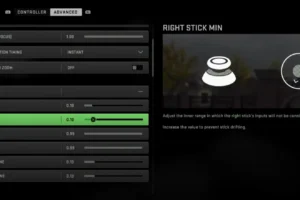Chivalry 2 is a popular medieval first-person slasher game that can be quite demanding on your system. With its high-quality graphics and intense gameplay, it’s crucial to maintain a good frame rate for an enjoyable experience. If you’re experiencing low FPS (frames per second) while playing Chivalry 2, here are some tips to help you improve your game performance and enjoy smoother gameplay.
Set Window Mode to Fullscreen

This really helped me. I have RTX 3070 Ti and on default setting of Windowed Fullscreen I was getting terrible performance, on Low I would get shaky 40 FPS. Then I investigated different options and choosing just Fullscreen mode helped a lot. I get now 100+ FPS on High settings with Nvidia DLSS on.
Also, this option can help a lot: Choose DirectX 12 instead of DirectX 11.
Update your graphics drivers
Outdated graphics drivers can significantly impact your gaming performance. Make sure to keep your graphics drivers up-to-date to ensure optimal performance. Visit the official website of your graphics card manufacturer (NVIDIA, AMD, or Intel) and download the latest drivers for your specific GPU model.
Adjust in-game settings
Tweaking the in-game settings can have a significant effect on your FPS. Here are some settings you should consider adjusting:
- Resolution: Lowering the resolution can improve FPS, but it may also affect image quality. Try reducing the resolution to see if it helps without compromising visual quality too much.
- Graphics quality: Chivalry 2 offers preset graphics quality options (Low, Medium, High, and Ultra). Start by setting the graphics quality to Low and gradually increase it to find the best balance between performance and visual quality.
- V-Sync: Disabling V-Sync can improve FPS but may cause screen tearing. Turn off V-Sync and see if it boosts your performance.
- Anti-aliasing: Reducing or disabling anti-aliasing can increase FPS, as it is a demanding graphical feature.
- Shadows and textures: Lowering the quality of shadows and textures can improve performance without impacting gameplay too much.
Optimize your PC settings
Several PC settings can also affect your gaming performance. Here are some tips to optimize your PC for Chivalry 2:
- Power settings: Make sure your computer is set to High Performance mode in the power settings. This ensures that your PC utilizes its full potential while gaming.
- Disable background applications: Close unnecessary applications and processes running in the background to free up system resources for Chivalry 2.
- Clean your PC: Regularly clean your PC, both physically and digitally. Dust buildup can cause overheating and impact performance. Additionally, use a reputable antivirus program to scan and remove any malware that might be affecting your system.
Overclock your GPU
Overclocking your GPU can boost your FPS, but it should be done with caution. Overclocking can cause overheating, instability, and even permanent damage to your hardware if not done properly. Use dedicated overclocking software, such as MSI Afterburner or EVGA Precision X1, and follow a reliable overclocking guide to ensure safe and effective results.
Upgrade your hardware
If you’ve tried all the above tips and still struggle with low FPS in Chivalry 2, it might be time to consider upgrading your hardware. Upgrading your GPU or adding more RAM can significantly improve your gaming performance. Before investing in new hardware, make sure to check the minimum and recommended system requirements for Chivalry 2 and compare them to your current system.
By following these tips, you should be able to fix low FPS in Chivalry 2 and enjoy a smoother, more enjoyable gaming experience. Remember that finding the right balance between performance and visual quality is key to ensuring the best possible gameplay.
Manage your disk space
Running out of disk space can significantly slow down your computer, leading to lower FPS. Make sure to keep at least 15% of your disk free. This can be achieved by regularly deleting unnecessary files, uninstalling unused programs, and using tools like Disk Cleanup on Windows to remove system files and other items that you no longer need.
Lower the render scale
The render scale adjusts the resolution of the game’s 3D rendering, independent of the display’s resolution. Lowering the render scale can result in a significant FPS boost, but at the cost of image clarity. Experiment with the render scale setting to find the best balance for your system.
Adjusting Windows visual effects
Windows has various visual effects that can be adjusted for better performance. To do this, open the system properties, navigate to advanced system settings, and under performance, select “Adjust for best performance.” This will turn off Windows visual effects, which should increase performance.
Limit background processes
High CPU usage from other applications can significantly affect your game’s performance. Use the Task Manager to view all running processes and close those that are not needed while you’re playing Chivalry 2.
Remember, it’s essential to keep your system healthy and up-to-date. Regularly check for system updates, as these often include performance enhancements and security fixes that could impact your gaming performance.














